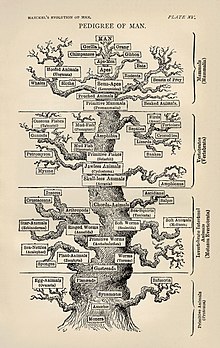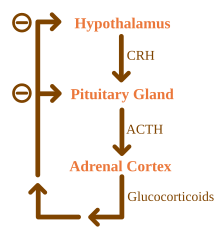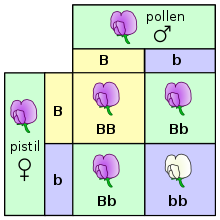Biology
From Wikipedia, the free encyclopedia

Biology deals with the study of the many varieties of living organisms. Clockwise from top left: Salmonella typhimurium, Phascolarctos cinereus, Athyrium filix-femina, Amanita muscaria, Agalychnis callidryas, and Brachypelma smithi
- Cells are the basic unit of life
- New species and inherited traits are the product of evolution
- Genes are the basic unit of heredity
- An organism regulates its internal environment to maintain a stable and constant condition
- Living organisms consume and transform energy.
Contents |
History
Main article: History of biology

Ernst Haeckel's Tree of Life (1879)
Although biology in its modern form is a relatively recent development, sciences related to and included within it have been studied since ancient times. Natural philosophy was studied as early as the ancient civilizations of Mesopotamia, Egypt, the Indian subcontinent, and China. However, the origins of modern biology and its approach to the study of nature are most often traced back to ancient Greece.[6] While the formal study of medicine dates back to Hippocrates (ca. 460 BC – ca. 370 BC), it was Aristotle (384 BC – 322 BC) who contributed most extensively to the development of biology. Especially important are his History of Animals and other works where he showed naturalist leanings, and later more empirical works that focused on biological causation and the diversity of life. Aristotle's successor at the Lyceum, Theophrastus, wrote a series of books on botany that survived as the most important contribution of antiquity to the plant sciences, even into the Middle Ages. Significant advances in the study and development of biology were promoted through the efforts of such Muslim physicians as the Afro-Arab scholar al-Jahiz (781–869) in zoology,[7] the Kurdish biologist Al-Dinawari (828–896) in botany,[8] and the Persian physician Rhazes (865–925) in anatomy and physiology. These philosophers elaborated on, expanded, and improved the Greek biological theories and systematics. Medicine was especially well studied by Islamic scholars working in Greek philosopher traditions, while natural history drew heavily on Aristotelian thought, especially in upholding a fixed hierarchy of life.
Biology began to quickly develop and grow with Antony van Leeuwenhoek's dramatic improvement of the microscope. It was then that scholars discovered spermatozoa, bacteria, infusoria and the sheer strangeness and diversity of microscopic life. Investigations by Jan Swammerdam led to new interest in entomology and built the basic techniques of microscopic dissection and staining.[9]
Advances in microscopy also had a profound impact on biological thinking itself. In the early 19th century, a number of biologists pointed to the central importance of the cell. In 1838 and 1839, Schleiden and Schwann began promoting the ideas that (1) the basic unit of organisms is the cell and (2) that individual cells have all the characteristics of life, although they opposed the idea that (3) all cells come from the division of other cells. Thanks to the work of Robert Remak and Rudolf Virchow, however, by the 1860s most biologists accepted all three tenets of what came to be known as cell theory.[10]
Meanwhile, taxonomy and classification became a focus in the study of natural history. Carolus Linnaeus published a basic taxonomy for the natural world in 1735 (variations of which have been in use ever since), and in the 1750s introduced scientific names for all his species.[11] Georges-Louis Leclerc, Comte de Buffon, treated species as artificial categories and living forms as malleable—even suggesting the possibility of common descent. Though he was opposed to evolution, Buffon is a key figure in the history of evolutionary thought; his work influenced the evolutionary theories of both Lamarck and Darwin.[12]
Serious evolutionary thinking originated with the works of Jean-Baptiste Lamarck. However, it was the British naturalist Charles Darwin, combining the biogeographical approach of Humboldt, the uniformitarian geology of Lyell, Thomas Malthus's writings on population growth, and his own morphological expertise, that created a more successful evolutionary theory based on natural selection; similar reasoning and evidence led Alfred Russel Wallace to independently reach the same conclusions.[13]
The discovery of the physical representation of heredity came along with evolutionary principles and population genetics. In the 1940s and early 1950s, experiments pointed to DNA as the component of chromosomes that held genes. A focus on new model organisms such as viruses and bacteria, along with the discovery of the double helical structure of DNA in 1953, marked the transition to the era of molecular genetics. From the 1950s to present times, biology has been vastly extended in the molecular domain. The genetic code was cracked by Har Gobind Khorana, Robert W. Holley and Marshall Warren Nirenberg after DNA was understood to contain codons. Finally, the Human Genome Project was launched in 1990 with the goal of mapping the general human genome. This project was essentially completed in 2003,[14] with further analysis still being published. The Human Genome Project was the first step in a globalized effort to incorporate accumulated knowledge of biology into a functional, molecular definition of the human body and the bodies of other organisms.
Foundations of modern biology
Much of modern biology can be encompassed within five unifying principles: cell theory, evolution, genetics, homeostasis, and energy.[2]Cell theory
Main article: Cell theory
Cell theory states that the cell is the fundamental unit of life, and that all living things are composed of one or more cells or the secreted products of those cells (e.g. shells). All cells arise from other cells through cell division. In multicellular organisms, every cell in the organism's body derives ultimately from a single cell in a fertilized egg. The cell is also considered to be the basic unit in many pathological processes.[15] Additionally, the phenomenon of energy flow occurs in cells in processes that are part of the function known as metabolism. Finally, cells contain hereditary information (DNA) which is passed from cell to cell during cell division.Evolution

Natural selection of a population for dark coloration.
Main article: Evolution
A central organizing concept in biology is that life changes and develops through evolution, and that all life-forms known have a common origin. Introduced into the scientific lexicon by Jean-Baptiste de Lamarck in 1809,[16] evolution was established by Charles Darwin fifty years later as a viable theory when he articulated its driving force: natural selection.[17][18] (Alfred Russel Wallace is recognized as the co-discoverer of this concept as he helped research and experiment with the concept of evolution.)[19] Evolution is now used to explain the great variations of life found on Earth.Darwin theorized that species and breeds developed through the processes of natural selection and artificial selection or selective breeding.[20] Genetic drift was embraced as an additional mechanism of evolutionary development in the modern synthesis of the theory.[21]
The evolutionary history of the species—which describes the characteristics of the various species from which it descended—together with its genealogical relationship to every other species is known as its phylogeny. Widely varied approaches to biology generate information about phylogeny. These include the comparisons of DNA sequences conducted within molecular biology or genomics, and comparisons of fossils or other records of ancient organisms in paleontology.[22] Biologists organize and analyze evolutionary relationships through various methods, including phylogenetics, phenetics, and cladistics. (For a summary of major events in the evolution of life as currently understood by biologists, see evolutionary timeline.)
The theory of evolution postulates that all organisms on the Earth, both living and extinct, have descended from a common ancestor or an ancestral gene pool. This last universal common ancestor of all organisms is believed to have appeared about 3.5 billion years ago.[23] Biologists generally regard the universality and ubiquity of the genetic code as definitive evidence in favor of the theory of universal common descent for all bacteria, archaea, and eukaryotes (see: origin of life).[24]
Genetics
Main article: Genetics
DNA usually occurs as linear chromosomes in eukaryotes, and circular chromosomes in prokaryotes. A chromosome is an organized structure consisting of DNA and histones. The set of chromosomes in a cell and any other hereditary information found in the mitochondria, chloroplasts, or other locations is collectively known as its genome. In eukaryotes, genomic DNA is located in the cell nucleus, along with small amounts in mitochondria and chloroplasts. In prokaryotes, the DNA is held within an irregularly shaped body in the cytoplasm called the nucleoid.[27] The genetic information in a genome is held within genes, and the complete assemblage of this information in an organism is called its genotype.[28]
Homeostasis
Main article: Homeostasis

The hypothalamus secretes CRH, which directs the pituitary gland to secrete ACTH. In turn, ACTH directs the adrenal cortex to secrete glucocorticoids, such as cortisol. The GCs then reduce the rate of secretion by the hypothalamus and the pituitary gland once a sufficient amount of GCs has been released.[29]
To maintain dynamic equilibrium and effectively carry out certain functions, a system must detect and respond to perturbations. After the detection of a perturbation, a biological system normally respond through negative feedback. This means stabilizing conditions by either reducing or increasing the activity of an organ or system. One example is the release of glucagon when sugar levels are too low.
Energy

Basic overview of energy and human life.
The organisms responsible for the introduction of energy into an ecosystem are known as producers or autotrophs. Nearly all of these organisms originally draw energy from the sun.[31] Plants and other phototrophs use solar energy via a process known as photosynthesis to convert raw materials into organic molecules, such as ATP, whose bonds can be broken to release energy.[32] A few ecosystems, however, depend entirely on energy extracted by chemotrophs from methane, sulfides, or other non-luminal energy sources.[33]
Some of the captured energy is used to produce biomass to sustain life and provide energy for growth and development. The majority of the rest of this energy is lost as heat and waste molecules. The most important processes for converting the energy trapped in chemical substances into energy useful to sustain life are metabolism[34] and cellular respiration.[35]
Next.....






Tidak ada komentar:
Posting Komentar